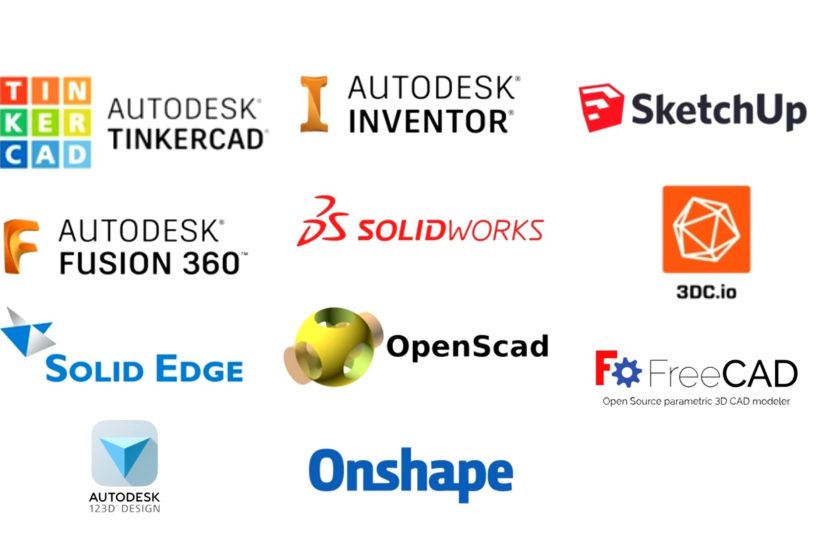CAD Software: A Comprehensive Guide for 3D Modeling Enthusiasts
As a 3D modeling enthusiast and advisor, I’m excited to share with you the wonderful world of CAD software. In this article, we will explore popular CAD software options for 3D modeling, discuss their key features and capabilities, provide user-friendly recommendations for beginners, highlight advanced software for professionals, compare free and paid options, and offer valuable tips for mastering CAD modeling techniques. So, let’s dive in and discover the power of this software!
Before we delve into the details, let’s understand what CAD software is and why it is crucial for 3D modeling. CAD stands for Computer-Aided Design, and it refers to the use of specialized software to create, modify, analyze, and optimize designs. This kind of enables designers and engineers to develop precise and realistic 3D models, empowering them to bring their creative ideas to life.
Popular CAD Software Options for 3D Modeling
When it comes to 3D modeling, several CAD software options have gained popularity among professionals and enthusiasts alike. Let’s explore a few noteworthy choices:
AutoCAD
AutoCAD is a powerful CAD tool known for its versatility and extensive feature set. It offers a wide range of tools for creating complex 3D models with precision and ease. With its intuitive user interface and robust functionality, AutoCAD has become a favorite among many designers.
SolidWorks
SolidWorks is another popular CAD software that excels in providing a seamless 3D modeling experience. It offers advanced features like parametric design and mesh modeling, allowing users to create intricate designs efficiently. SolidWorks’s user-friendly interface and comprehensive tutorials make it an excellent choice for beginners as well.
Luxion KeyShot
Luxion KeyShot is a top-notch CAD software widely recognized for its exceptional rendering capabilities. It provides realistic visualization options, allowing designers to present their models with stunning visual effects. Luxion KeyShot’s user-friendly interface and extensive library of materials make it a valuable tool for creating visually captivating designs.
Please note that these software options are just examples, and there are several other reputable CAD software choices available in the market.
Overview of Key Features and Capabilities
Now that we’ve explored some popular CAD software options, let’s delve into the key features and capabilities that make the software an essential tool for 3D modeling:
3D Modeling Tools
CAD software offers a vast array of 3D modeling tools, including primitive shapes, surface modeling, and solid modeling. These tools enable designers to create intricate and precise 3D models, providing them with the flexibility to design various components with ease.
Rendering and Visualization
One of the remarkable capabilities of CAD software is its ability to render and visualize 3D models. With realistic rendering options, designers can simulate lighting conditions, textures, and materials to present their designs in a visually appealing manner.
Parametric Design
Parametric design is a powerful feature offered by CAD software that allows designers to create relationships between different design elements. By defining parameters and constraints, designers can easily modify and update their models, ensuring design consistency and
flexibility.
Collaboration and File Sharing
CAD software often provides collaboration and file-sharing capabilities, enabling teams to work together seamlessly. With features like version control and real-time collaboration, designers can collaborate on projects efficiently, ensuring smooth communication and streamlined workflows.
User-friendly CAD Software for Beginners
If you’re new to 3D modeling and CAD software, don’t worry! There are user-friendly options specifically designed to help beginners get started. Here are a couple of recommended software choices:
Tinkercad
Tinkercad offers a simplified interface and intuitive tools, making it perfect for beginners. It provides step-by-step tutorials and extensive documentation to guide new users through the learning process. With Tinkercad, you can quickly grasp the basics of 3D modeling and begin creating your own designs.
SketchUp
SketchUp is another user-friendly CAD software that emphasizes ease of use without compromising functionality. It offers a streamlined interface and interactive tutorials to help beginners understand the software’s features and capabilities. SketchUp’s user-friendly nature makes it an excellent choice for those taking their first steps in 3D modeling.
Both Tinkercad and SketchUp prioritize ease of use and provide accessible resources like tutorials and community forums to assist beginners in their learning process. These software options offer a gentle learning curve while still enabling users to create impressive 3D models.
Advanced CAD Software for Professionals
For professionals looking to take their 3D modeling skills to the next level, advanced CAD software is a must. Here are two notable options:
SolidWorks Pro
SolidWorks Pro is a feature-rich software program preferred by professionals in various industries. It offers advanced tools and functionalities like parametric modeling, simulation, and assembly design. SolidWorks Pro’s extensive capabilities make it an indispensable tool for professionals tackling complex projects.
CATIA Premium
CATIA Premium is a highly specialized software program widely used in specific industries such as automotive and aerospace engineering. It provides advanced features like finite element analysis and computational fluid dynamics, enabling professionals to perform intricate simulations and optimizations. CATIA Premium’s specialized tools make it an ideal choice for professionals in specialized fields.
Both SolidWorks Pro and CATIA Premium are powerful CAD software options that cater to professionals with demanding design requirements and intricate projects.
Please note that these specific software options mentioned here are for illustrative purposes, and there are many other free and paid CAD software options available in the market with varying features and capabilities.
Comparison of Free and Paid CAD Software Options
When it comes to CAD software, you have the option to choose between free and paid versions. Let’s briefly compare the two:
Free CAD Software
AutoCAD software provides a cost-effective solution for beginners and those with limited budgets. Which is a popular software program developed by Autodesk. While they may not offer the full range of features found in paid versions, they still provide ample functionality for basic 2D and 3D modeling needs.
Fusion 360 Lite refers to the lightweight version of a well-known CAD software. Fusion 360 Lite offers a simplified feature set compared to the full version but still provides ample functionality for beginners and hobbyists to explore 3D modeling and design.
Both AutoCAD Free and Fusion 360 Lite are excellent options for individuals who want to get started with CAD modeling without investing in a paid software license.
Paid CAD Software
Paid CAD software often offers more advanced features and capabilities compared to free versions. They are tailored for professionals and those who require advanced tools for complex projects. While they come at a cost, the additional functionalities and enhanced support make them worth considering.
Notable paid CAD software include:
SolidWorks Pro refers to the professional version of CAD software. SolidWorks Pro offers an extensive set of advanced features and capabilities for professionals working on complex 3D modeling projects. It provides enhanced tools for designing assemblies, performing simulations, and creating detailed engineering drawings.
CATIA Premium represents the premium edition of CAD software. CATIA Premium is a high-end CAD software widely used in industries such as aerospace and automotive engineering. It offers advanced functionalities like surface modeling, advanced simulation capabilities, and comprehensive collaboration tools.
Both SolidWorks Pro and CATIA Premium are powerful software program options that cater to professionals with demanding design requirements and intricate projects.
Tips for Mastering CAD Modeling Techniques
Mastering CAD modeling techniques requires practice, dedication, and continuous learning. Here are some tips to help you become a proficient CAD modeler:
Practice Regularly
Consistent practice is key to improving your CAD modeling skills. Set aside dedicated time to work on projects, experiment with different tools, and explore new design techniques. The more you practice, the more confident and skilled you’ll become.
Utilize Online Tutorials and Resources
Take advantage of the wealth of online tutorials, courses, and forums available for CAD software. These resources provide step-by-step guidance, tips, and tricks to enhance your understanding and proficiency. Engage with the CAD community, ask questions, and share your knowledge to further enrich your learning journey.
Join CAD Communities
Joining CAD communities and forums allows you to connect with fellow designers, exchange ideas, and seek advice. Collaborating with like-minded individuals can inspire creativity and expose you to new techniques and perspectives. Engaging with the CAD community fosters growth and helps you stay up to date with industry trends.
Conclusion
CAD software plays a pivotal role in the world of 3D modeling, enabling designers and engineers to bring their creative ideas to life. We explored popular software options for 3D modeling, discussed key features and capabilities, provided user-friendly recommendations for beginners, highlighted advanced software for professionals, compared free and paid options, and offered valuable tips for mastering CAD modeling techniques. Whether you’re a beginner or a professional, there’s CAD software out there to meet your specific needs and propel your design journey forward.
FAQs
- Can I use free CAD software for professional projects?
While free CAD software can be suitable for basic projects, paid software often offers more advanced features and support required for professional work. - Are there any CAD software options specifically for architectural design?
Yes, several CAD software options cater to architectural design, offering specialized tools and libraries for architects. - Can CAD software be used for 2D drafting as well?
Absolutely! CAD software can handle both 2D drafting and 3D modeling, providing versatility for various design needs. - Is it necessary to have formal training in CAD software?
While formal training can be beneficial, many individuals learn CAD software through self-study and online resources. It’s more important to practice regularly and explore different techniques. - Can CAD software help with prototyping and manufacturing?
Yes, CAD software is extensively used in prototyping and manufacturing processes, allowing designers to create accurate models and facilitate the production of physical objects.




